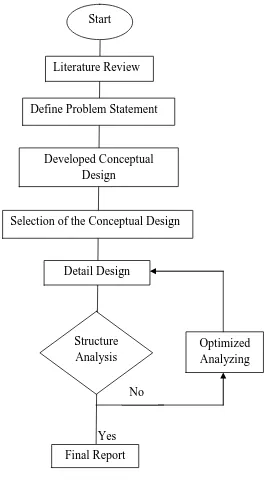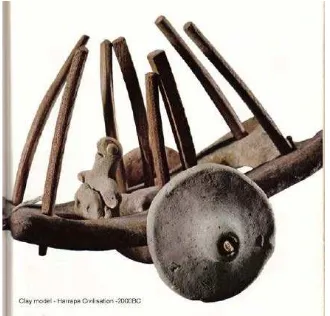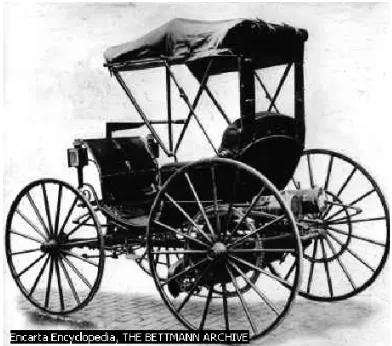ACKNOWLEDGEMENTS
Alhamdulillah, thanks to Allah S.W.T for giving me life and allowed me to finish this project. Deep in my heart, I also thanked to my parents that always pray for my journey to be an engineer. A lot of thanks to my lecturers, Mr. Shafizal Bin Mat for supporting me to undergo this project and also providing his guidance, assistance and encouragement throughout the whole duration of the project.
Next, I would like to dedicate my thankful to my parents and to my siblings especially my brother Mohd Zaki Bin Idral for giving a full support morally and encourage me to face the problem with passion during the completion of my project.
Finally, thanks to my entire friend and any one those always motivate me for giving good cooperation in comment, opinion and supports directly or indirectly. Hopefully this dissertation will be useful as guidance for a student in future as their reference in further study.
ABSTRACT
ABSTRAK
TABLE OF CONTENT
CHAPTER PAGES
ACKNOWLEDGEMENT i
ABSTRACT ii
ABSTRAK iii
TABLE OF CONTENT iv
LIST OF TABLES ix
LIST OF FIGURES x
CHAPTER 1 INTRODUCTION 1
1.1 Project Introduction 1
1.2 Project Objective 2
1.3 Project Scope 3
1.4 Problem Statement 3
1.5 Methodology view 4
CHAPTER 2 LITERATURES REVIEW 6
2.1 Introduction 6
2.2 Chassis 7
2.3 Race Car’s Structure 10
2.4 Monocouqe 11
2.4.1 Angular Monocouqe 12
2.4.2 Carbon Fiber Monocouqe 13
2.6 Current Frame 14
2.7 Modern Space Frame 15
2.8 Previous UTeM Space Frame 16
2.9 Race Car Vehicle Dynamic 17
2.10 Structural Design 17
2.11 Structural Stiffness 18
2.12 Structural Deflection 19
2.13 Theory of Failure 19
2.14 Distortion-Energy Theory 20
2.15 Finite Element Analysis 24
2.15.1 Polygon Mesh 25
2.15.2 Load Distribution 25
2.15.3 Fix or Restrain Area 26
CHAPTER 3 DESIGN CRITERIA
3.1 Introduction 28
3.2 Product Design Specification 29
3.2.1 Vehicle Configuration 29
3.2.2 Ground Clearance 29
3.2.3 Jacking Points 29
3.2.4 Crash Protection 30
3.2.4.1 Main Hoop 30
3.2.4.2 Front hoop 31
3.2.5 Side Impact Protection 32
3.3 Ergonomics 33
3.4 Safety Factor 34
3.6 Types of Materials 35
3.6.1 Steel 35
3.6.1.1 Plain Carbon Steel 35
3.6.1.2 Alloy Steels 37
CHAPTER 4 METHODOLOGY 39
4.1 Introduction 39
4.2 Material Specification 39
4.3 Tube Geometry 41
4.3.1 Circular Tube 42
4.3.2 Rectangular Tube 42
4.4 Material Selection 43
4.5 Morphology Chart 44
4.6 Conceptual Design 45
4.6.1.1 Important of Conceptual Design 45 4.6.2 Conceptual Design of a Single Seated
Formula Racing Car 46
4.7 Concept Evaluation 50
4.7.1 Pugh Selection Method 50
4.7.1.1 Step in Evaluating the Characteristic
And Scoring Result 51
4.8 Three Best Concept Design 53
4.9 Detail Drawing View 54
CHAPTER 5 ENGINEERING ANALYSIS 57
5.1 Introduction 57
5.2 Determination of Loads 58
5.2.1 Static Load 58
5.2.2 Dynamic Loads 58
5.2.3 Cornering Load 60
5.3 Determination of Design 61
5.3 Braking Acceleration 61
5.3.2 Lateral Acceleration 61
5.3.3 Determination of Torsional Stiffness 62
5.4 Comparison between FEM with
Manual Calculation 65
5.4.1 Manual Calculation 66
5.4.2 CATIA FEA Result 69
5.5 Result of Design Analysis 69
5.5.1 Analysis in Total Weight 70
5.5.2 Analysis on accelerating 71
5.5.3 Analysis on braking 72
5.5.4 Analysis on cornering 73
5.5.5 Analysis on Torsional Stiffness 74
5.6 CATIA Result on FEA Analysis 74
5.6.1 Design 3 75
5.6.1.1 Total Weight 75
5.6.1.2 Acceleration 76
5.6.1.3 Braking 77
5.6.1.4 Cornering 78
5.6.1.5 Torsional stiffness 79
5.6.2 Design 5 80
5.6.2.1 Total Weight 80
5.6.2.2 Acceleration 81
5.6.2.3 Braking 82
5.6.2.4 Cornering 83
5.6.2.5 Torsional stiffness 84
5.6.3 Design 7 85
5.6.3.1 Total Weight 85
5.6.3.2 Acceleration 86
5.6.3.3 Braking 87
5.6.3.4 Cornering 88
5.6.3.5 Torsional stiffness 89
5.6.4 Summarize of the analysis result 89
5.8 Stability 92
CHAPTER 6 DISCUSSION 94
6.1 Introduction 94
6.1.1 Choosing the Final Design 94
6.1.2 Description for the Final Design 95
CHAPTER 4 CONCLUSION AND RECOMMENDATION 97
7.1 Conclusion 97
7.2 Recommendation 98
REFERENCES 99
APPENDICES
A Gantt chart & Sketching Design 101 B UTeM Formula Varsity Racing Car 104
C Detail Design Drafting 106
D Formula SAE 2009 Rules 109
LIST OF TABLES
3.1 Safety Factor for Structure Design 35
4.1 Morphology Chart 45
4.2 Pugh Selection Method 51
5.1 Material Properties for Carbon Steel 57
5.2 Description to constrain the structure 65
5.3 Maximum Deflection in Difference Cases for Design 3 90 5.4 Maximum Deflection in Difference Cases for Design 5 90 5.6 Maximum Deflection in Difference Cases for Design 7 90
LIST OF FIGURES
1.1 Methodology Chart 5
2.1 Clay Model - 2000 BC 7
2.2 Cugnot Steam Tractors 1770 AD 8
2.3 The Horseless Carriage 1890 AD 8
2.4 The Modern Motorcar 9
2.5 The Platform Chassis 9
2.6 Ford GT40 11
2.7 Angular Monocoque 12
2.8 Simple Space Frame 14
2.9 Complex Space Frames of Mercedes 14
2.10 Sheet Monocoque Structure 15
2.11 Audi R8 monocouque frame 16
2.12 Previous space frame for UTeM Formula Varsity 16 2.13 Element in different situation of stresses 21 2.14 Two possible elements and the normal to their faces 25
3.1 Structure Restrictions 32
3.2 Side Impact Members 32
3.3 Driver’s position for FSAE structure according to ‘
Quick and dirty’ method 34
4.1 Circular Tube 42
4.2 Rectangular Tube 42
4.3 UTeM Formula Varsity Design 46
4.4 Concept 1 47
4.5 Concept 2 47
4.6 Concept 3 48
4.7 Concept 4 48
4.8 Concept 5 49
4.9 Concept 6 49
4.10 Concept 7 50
4.11 Concept 3 53
4.12 Concept 5 53
4.13 Concept 7 54
4.14 Design 3 56
4.15 Design 5 56
4.16 Design 7 56
5.1 Braking loading 61
5.2 Lateral loading 61
5.3 Torsion Tube 62
5.4 Frame in Torsion Case 63
5.5 Front Suspension Bay Torsion Loads 63
5.6 Free Body Diagram Distribution Load on Beam 66
5.7 CATIA result on deformation 69
5.8 Load and Restrain for Total Weight Analysis (Design 3, 5, and 7) 70 5.9 Load and Restrain for Accelerating Analysis (Design 3, 5, and 7) 71 5.10 Load and Restrain for Braking Analysis (Design 3, 5, and 7) 72 5.11 Load and Restrain for Cornering Analysis (Design 3, 5, and 7) 73 5.12 Load and Restrain for Torsional Stiffness Analysis (Design 3, 5, and 7) 74
5.13 Stress on Total Weight 75
5.15 Stress on Acceleration 76
5.16 Deflection on Acceleration 76
5.17 Stress on Braking 77
5.18 Deflection on Braking 77
5.19 Stress on Cornering 78
5.20 Deflection on Cornering 78
5.21 Deflection on Torsional Stiffness 79
5.22 Stress on Total Weight 80
5.23 Deflection on Total Weight 80
5.24 Stress on Acceleration 81
5.25 Deflection on Acceleration 81
5.26 Stress on Braking 82
5.27 Deflection on Braking 82
5.28 Stress on Cornering 83
5.29 Deflection on Cornering 83
5.30 Deflection on Torsional Stiffness 84
5.31 Stress on Total Weight 85
5.32 Deflection on Total Weight 85
5.33 Stress on Acceleration 86
5.34 Deflection on Acceleration 86
5.35 Stress on Braking 87
5.36 Deflection on Braking 87
5.37 Stress on Cornering 88
5.38 Deflection on Cornering 88
5.39 Deflection on Torsional Stiffness 89
5.40 Result for Central Gravity Design 3 93
5.41 Result for Central Gravity Design 5 93
5.42 Result for Central Gravity Design 7 93
CHAPTER 1
INTRODUCTION
1.1 Project Introduction
Formula Varsity is a student competition that initiate by Universiti Teknikal Malaysia Melaka (UTeM), in which a small formula style race car are designed and built. However, the concept and regulation of this competition is almost similar with Formula Student Automotive Engineers (FSAE) competition. The basic of the competition is that a fictitious company has contracted a group of engineers to build a small formula car. The competition has rules limiting the race car engine to a maximum displacement of 610cc with a single inlet restrictor. Other rules require that the car must also satisfy safety requirements such as having a side impact protection, main hoop and front hoop. The vehicle should have very high performance in terms of acceleration, braking and handling and be sufficiently durable to successfully complete all the events described in the Formula SAE Rules and held at the Formula SAE competitions (Formula SAE Rules, 2009).
Mechanical Engineers (IMechE) agreed to be to manage the European venture in a partnership with SAE to make this competition succeed (Robinson B., 2004).
Formula SAE promotes careers and excellence in engineering as it encompasses all aspects of the automotive industry including research, design, manufacturing, testing, developing, marketing, management and finances. This project is rarely opportunity among the engineering student. Formula SAE takes students out of the classroom and allows them to apply textbook theories to real work experiences. It also realized the student about the work field live and to train them dare to face it after finish the study.
In 2004, Formula SAE has attracted entries from 66 different universities, from 19 different countries, from the UK, mainland Europe and from North America, Asia and Australia. For the universities, Formula SAE represents a valuable project that blends academic work and learning with the development of practical engineering skills. They are increasingly using it to attract school leavers to their degree programmers, and to forge closer links with industries. So, hopefully this project can be an initial step for UTeM to develop a Formula SAE car that can represent the UTeM as a World Class University (WCU) to the outside world.
1.2 Project Objective
1.3 Project Scopes
The scopes of this project are:
• Literature review on the design and structural analysis and ergonomic analysis of a single seater formula racing car.
• Conceptual design of single seater formula racing car
• Selection of the concept design
• Detail design using CATIA V5 R16 software.
• Structural analysis analysis using CATIA V5 R16 containing the total weight, acceleration, braking, cornering and torsional stiffness.
• Final design and justification.
1.4 Problem Statement
Formula Student Automotive Engineers is the platform for all engineering student especially design and automotive to show off their skill and knowledge in engineering. The concept behind Formula SAE is that a fictional manufacturing company has contracted a design team to develop a small Formula-style race car. The prototype race car is to be evaluated for its potential as a production item. Each student team designs, builds and tests a prototype based on a series of rules whose purpose is both to ensure onsite event operations and promote clever problem solving. By doing many testing and improvement to achieve the best design which is suitable for during race days.
Designing and analysis the concept of the structure of Formula Racing Car is the main purpose of this project. The result of this project should be better than the existing design which is UTeM Formula Varsity Racing Car. The current design did not include the side impact protection that will be mentioned in the next chapter. The capacity of the engine used in FSAE should consider the 610cc as main requirement. However, in UTeM design just for 110cc capacity of engine. The design of formula racing car always expand to optimize and improvement to become the best of design. This situation will never end because the high profile event for example Formula 1 Grand Prix team always try to develop their design to find out the greatest car to compete among other competitor team.
1.5 Methodology View
In the initial steps, all the recommendation to design the structure will be studied such as the FSAE 2009 Rules, components to put inside the structure and the condition of the driver. After that, material for the structure will be selected according to the material’s trait. Then, it will come out with lots of conceptual designs according to the best structure and FSAE regulation. After that, the best three will be selected and continue to the next step of detail designs which will be drawn in CATIA V5 R16 for 3D modeling. These detail designs will be analyzed using CATIA Analysis & Simulation (Generative Structural Analysis) to find out the best result in structural analysis among
Figure 1.1 Methodology Chart Start
Literature Review
Define Problem Statement
Developed Conceptual Design
Detail Design
Selection of the Conceptual Design
Optimized Analyzing
Final Report Structure Analysis
No
CHAPTER 2
LITERATURE REVIEW
2.1 Introduction
This section explains some of the literature reviews about the race cars and structural analysis. It includes race car the chassis, structural design and analysis in Finite Element Analysis (FEA). This chapter consist based on the research and statement from the previous and it will be the guideline for this dissertation to continuous the finding of the result in designing and analysis the Structure of Single Seated Formula Racing Car.
The Formula SAE Series competitions challenge teams of university undergraduate and graduate students to conceive, design, fabricate and compete with small, formula style, autocross racing cars. To give teams the maximum design flexibility and the freedom to express their creativity and imaginations there are very few restrictions on the overall vehicle design. Teams typically spend a few period times to designing, building, testing and preparing their vehicles before a competition. The competitions themselves give teams the chance to demonstrate and prove both their creativity and their engineering skills in comparison to teams from other universities around the world.
2.2 Chassis
The purpose of the auto chassis is to link up the suspension mounting points, final drive, steering, engine / gearbox, fuel cell and occupants. The auto chassis requires rigidity for precise handling, light weight to minimize both construction and running costs and inertia, and toughness to survive the quite severe fatigue loads imposed by the driver, road surface and power plant from statement of Fenton, 1980. This is the purpose required when the chassis design criteria that need to be considered before the design and analysis begin.
[image:23.612.246.411.381.539.2]According to Owen & Bowen (1967), the original and oldest form of chassis used for thousands of years even before the invention of the wheel (a sled has a chassis). This is a clay model (probably a toy) from the Harappa Civilization (Indus Valley) from 4000 years ago.
Figure 2.1 Clay Model - 2000 BC (Source: Owen & Bowen, 1967)
Figure 2.2 Cugnot Steam Tractor 1770 AD (Source: Owen & Bowen, 1967)
This was a turning point in chassis design it was the first known selfpropelled road vehicle. The dynamics of this new development led to new and better things like the horseless carriage just over 100 years later said Anthony M O’Neill (2005).
[image:24.612.230.426.345.518.2]

